Scotland's Most Popular Castles
If you travel to Scotland, you will find that castles are an integral part of its landscape. The very first castles in Scotland were built sometime in the 11th or 12th century and over the years, thousands of castles were built across the country. Ranging from tower houses to medieval fortresses to country houses, some had defensive capabilities while some did not. Today, many of the castles are in ruins while some have been immaculately preserved and this post aims to bring to you a list of some of the most famous castles in Scotland.
Located near the village of Dornie, at the meeting point of three sea-lochs, is the stunning Eilean Donan Castle. It is one of the most visited and one of the most recognised castles in Scotland.
With a picture-perfect setting, the castle located on a small tidal island is named after Donnán of Eigg, a Celtic saint who is thought to have established a church on the island.
The castle was originally built in the 13th century and offered an excellent defensive position for the Clan Mackenzie. Over the centuries the castle was expanded and even reduced in size. It was ultimately destroyed in 1719 during the Jacobite risings. It then remained in neglect for hundreds of years before being purchased by Lt Colonel John Macrae-Gilstrap in 1911. He then spent many years getting the castle rebuilt and the restoration and reconstruction were completed in 1932.
In 1955, the castle was opened to the public and since then it has remained a very popular tourist attraction. It is not a huge castle, so you can easily explore it in a couple of hours. There is a small coffee shop and a gift shop on site.
A number of travel companies offer guided day trips to the Eilean Donan Castle from major cities like Edinburgh, Inverness and Glasgow. Alternately, you can drive down to the castle. Limited parking is available nearby.
By Ashley of Impact Winder
Perched on the rugged cliffs of Cruden Bay, the remains of Slains Castle are striking against the wild North Sea and give a glimpse into the precarious and unique history of Scotland.
Not to be confused with the ruins of Old Slains Castle just down the road, New Slains Castle - while also a ruin - is a much more recent Scottish castle with plenty of history to impress. Located in Aberdeenshire, Slains Castle was built in the 16th century after King James IV blew up the owner's previous castle just down the road.
Because of its dramatic location and gothic appearance, Slains Castle is said to be the inspiration for the setting of Bram Stoker's Count Dracula, who often visited Cruden Bay during his frequent visits to Scotland.
In 1838, Slains Castle was rebuilt in the Scots Baronial style that you can see today. In 1916, after 300-year family ownership, the castle was sold, and in 1925, the roof was removed to avoid paying taxes. The castle has since been in a state of deterioration but is open for visitors to explore. Walking through the empty halls that have been exposed to the elements for almost 100 years is both impressive and eerie.
To get to Slains Castle, you'll need a car and will drive 26 miles North from Aberdeen until you see signs posted for Slains Castle. You can park in the village of Cruden Bay and take a ¾ mile walk to the castle, or drive straight to the castle and park outside.
If you want to add in a unique natural wonder, drive past the castle until you reach Bullers of Buchan Trailhead. You can walk south along a trail that takes you to a 245 foot collapsed sea cave before continuing the 2.5 miles along the jagged cliff edges towards the dramatically perched Slains Castle.
By Rachel of Rachel's Ruminations
Crathes Castle, near Banchory in Aberdeenshire, was originally a “tower house”, meant to offer the inhabitants protection from attack. Its height allowed a good view over the surrounding land, and it had very thick walls with small window openings. On the upper floors, the tower features turrets and crenellations. As the years passed and the attack became less likely, bigger windows were added and, in the 18th century, an entire wing.
Inside, the ceilings of some rooms are quite low with heavy beams that have been painted. Some are original and badly faded, while others were touched up in the Victorian period. They’re probably not accurate copies, but they entertain in any case with images of heroic figures or fanciful creatures.
The Burnett family lived in Crathes Castle for over 300 years, with the last one leaving the castle to the National Trust for Scotland as recently as 1951. What that means is that the interior is unchanged. The furniture, the paintings, and generations of family mementoes: they are all there still, giving a clear idea of what it was like for descendants of the nobility to live amidst such an accumulation of inherited tradition.
Another special thing about Crathes Castle is its garden. The yew hedges are over 300 years old, and some of them are trimmed artfully into graceful curved shapes. Beyond the garden itself, two square kilometers of land are laced with trails.
The castle is about 35-40 minutes’ drive from Aberdeen. Alternatively, bus 201 or 202 from Union Square bus station in Aberdeen gets to the entrance in about an hour, though the walk from there to the castle takes another 20 minutes.
You can read more about Crathes Castle here.
By Graham of My Voyage Scotland
If you’re heading along the north coast 500 on the way to Lochinver, Ardvreck Castle is a short but scenic stop just along the A837. Located about half an hour north of Ullapool, this 16th-century castle sits in ruin along Loch Assynt, with just one tower and a small part of a defensive wall remaining.
When there are heavy rains and the Loch is overfilled, the small peninsula that the castle is located on can become cut off from the land making it look like an island, but on drier days you can walk up and explore the ruins independently and free of charge. Visitors can also explore the nearby Calda House or a small stream and waterfall across the road from the castle.
There’s free parking along the main road and the walk to the castle is an accessible level for most and there are some information boards along the way that explain the history of the castle.
The historic moment that earned Ardvreck its place in the history books took place in 1650 when royalist commander, James Graham (Marquis of Montrose) took refuge there after losing a battle in Carbisdale. Though the castle owner, Neil Macleod, was away at the time his wife welcomed Montrose in and then betrayed him to the Covenanter forces. The royalist commander was then taken to Edinburgh and executed.
If this tale is not dark enough for you, Ardvreck Castle is home to two ghosts, the first, a tall man, and the second a weeping girl. While there is not much detail about the male, the girl was supposedly promised to the devil in exchange for protection of the castle. Rather than be with the devil, the girl threw herself from a tower window and drowned in the loch below.
By Lee and Stacey of One Trip at a Time
Edinburgh Castle sits at one end of the famous Royal Mile that links the castle with the Palace of Holyrood. The castle, which was built on top of a dormant volcano, can easily be reached from Edinburgh Waverley railway station in less than fifteen minutes.
The origins of the castle date from the 7th-century and is why the city of Edinburgh exists. The hill was an excellent place to defend the main route between England and central Scotland. As armies from the Romans to the Jacobites travelled the route, this defensive position kept its importance and the city grew up around it.
Before you enter the castle, you’ll cross the large Esplanade, a parade ground built in the 18th-century and which hosts the Edinburgh Tattoo each year. Once inside you can explore the history and majesty of Edinburgh Castle. The impressive Scottish Crown Jewels, or Honours of Scotland as they are rightfully known, can be viewed alongside the Stone of Destiny.
Probably the castles most famous resident was Mary, Queen of Scots. You can visit the bedchamber where she gave birth to James VI who in 1603 united the crowns of England and Scotland.
The Hall of Honour is home to Scottish War Memorials, it commemorates the 127,000 Scottish soldiers that were killed in World War I as well as other more recent conflicts.
Heading up to the battlements you can see Napoleonic cannons and the much older siege gun called Mons Meg. It’s near here that you can see, and hear, the daily firing of the One O’clock gun, originally for the benefit of ships in the Firth, but now a ceremony for tourists.
Tip: Save time with a speedy skip-the-line entry to the castle and visit all of the most important sights in the Edinburgh Castle complex with an expert guide.
By Sophie of Sophie's Suitcase
Only 45 minutes outside the city of Aberdeen you can find the magical Craigeivar Castle. And what a wonderful castle this is too!
If fairy tales were real, all castles would look like Craigeivar. The pink hue makes this iconic Scottish castle well worth a visit and is among the best-preserved castles in Scotland. You will need a car to get here as there are no public transport options and the journey is around 27 miles from Aberdeen, through the gorgeous Aberdeenshire countryside.
Nestled on a picturesque hillside, the castle is apparently to be the inspiration behind Disney’s Cinderella Castle, and you can certainly see why. The outside is stunning, with tall turrets and intricate details around the windows. The castle was the seat of Clan Sempill and the Forbes family resided here for 350 years until 1963 when it was sold to the National Trust for Scotland.
At certain periods during the year, you can also head on inside to admire an impressive collection of armoury and art. The guided tours of the historic castle are limited to 10 per tour and they run on a first-come, first-served basis every 30 minutes. There is also a beautiful garden you can stroll around in. And when in the garden and estate, keep an eye out for the rare pine marten.
If you are heading back to Aberdeen after your visit, you could go back via another beautiful site: Crathes Castle in Banchory.

By Nick of Illness To Ultra
When in the middle of Aberdeenshire, head to Fyvie Castle, a beautiful castle that originated in the early 13th century and has since been added on with its oldest part dating back to 1380. Royal visitors from Willian the Lyon (1214), Alexander II (1222) to Robert the Bruce (1308) have visited this castle as it was built and used as a stronghold until 1380/90.
Fyvie Castle has since been converted into a comfortable residence for the clan families throughout the last few centuries and is considered one of the largest and most magnificent castles in Scotland. Most of the interior restorations can be attributed to the Leith family who gave Fyvie castle a grand makeover at the end of the 19th century.
To get to the castle, visitors either need a car or can take a stagecoach bus from Aberdeen to Fyvie village. You can expect about a 40-minute drive from Aberdeen or a 2-hour drive from Inverness by car.
At the castle, you can expect to be impressed by the carved finials, bartizans with conical roofs, and dormer windows that make this Scottish uniquely different from others in the country. There is also a fabulous portrait collection with works by Gainsborough, Raeburn, Romney, and Hoppner. After taking an inside tour of the castle, have a stroll through the picturesque gardens that take you around the lake and past peculiar glass-roofed racquet courts.
Don’t forget to look up and learn about the resident ghosts who are said to have frequented Fyvie Castle in the past.
By Chrisoula Manika of Historic European Castles
The magnificent Doune Castle in Scotland is a medieval courtyard castle built along the Ardoch Burn as it flows towards the River Teith. This is not only a picturesque location but also one that would have been key for battle during the Wars of the Three Kingdoms and Glencairn's Rising.
This grand, Scottish castle is a well-preserved 14th Century stronghold, with original stonework, a 100ft-high gatehouse and a spectacular Great Hall that links the family rooms and the kitchen area and guest rooms. Stepping into the castle allows you to imagine the banquets and battles that would have taken place here, transporting you straight back to the Middle Ages.
Built by Robert Stewart, Duke of Albany (also known as the 'uncrowned king of Scotland'), Doune Castle has been used as a wartime fortress, a hunting lodge and dower house, a prison and garrison and is now a tourist attraction, museum and popular set location for films and television series such as Monty Python and the Holy Grail and Game of Thrones.
Today, guests can visit the castle with an audio tour, admire the views of the river from the battlements, take the Doune Castle Explorer Quiz and even get married with the great Doune Castle as a backdrop!
Located in the Stirling District of Scotland, Doune Castle can be reached from Glasgow in around 40 minutes and from Edinburgh in just over an hour so makes a wonderful option for a day trip from either of the two major cities.
By Amanda of The Boutique Adventurer
Culzean Castle overlooks the Firth of Clyde on the Ayrshire coast in the South West of Scotland. The castle is one of 40 buildings on the 260-hectare estate. This Scottish castle was built in stages between 1777 and 1792 by the 10th Earl of Cassilis. The castle was given to the National Trust for Scotland in 1945 to avoid inheritance tax.
However, there was a condition of Culzean Castle being gifted to the Scottish National Trust. The apartment at the top of the castle was to be given to the General of the Army of Dwight D Eisenhower in recognition of his role in during the Second World War. The general stayed in the apartment at Culzean Castle for the first time in 1946. He went on to stay at the castle four more times, including whilst he was President of the United States.
Culzean Castle re-opened in 2011 after an American millionaire who had never visited the castle requested that a significant portion of his estate be left to it. He was apparently interested in Eisenhower’s apartment at Culzean.
Today, it is possible to stay at the castle at what was the Eisenhower Apartment in one of six bedrooms. Do take a guided tour through the castle to get a better understanding of its interesting history. Architect Robert Adam’s Oval staircase is a must-see as it is the centrepiece of the castle. The knife collection is particularly impressive.
The grounds of the garden are stunning. They feature a walled garden, sea caves, a boat launch and two cafes with fantastic views and good snacks.
The nearest major city to Culzean Castle is Glasgow. The journey from Glasgow to Culzean Castle takes 2 hours by train and just over one hour by car. The castle is 20 minutes by car from the nearby town of Ayr.
By Angela of Where Angie Wanders
Blair Castle is one of Scotland’s most well-known historic monuments and for good reason. You see the oldest part of this castle dates back to 1269 and is the ancestral home of the Clan Murray and the seat of their chieftain, the Duke of Atholl.
The architecture inside the castle is a mix of Medieval, Georgian and Victorian – indicative of how many centuries the castle has been in existence. Thirty rooms are open to the public and contain furniture, paintings and artefacts from times gone by. The Baronial Hall is exquisite with its dark wood panelling and weaponry displayed in pattern formation on the walls.
Today, the weaponry is purely for display however Blair Castle still has the only remaining private army in Europe. The Atholl Highlanders is a Scottish ceremonial infantry regiment acting as the personal bodyguards to the Dukes of Atholl. The current Duke is Bruce Murray who is the 12th Duke of Atholl.
Outside the castle, there is a sprawling 9-acre estate. Its walled "Hercules Gardens" are listed as one of Scotland’s most significant gardens and have a life-sized statue of Hercules watching over them. Consisting of an orchard, landscaped ponds, flower borders and even a Chinese bridge it allows the visitor to enjoy a relaxing stroll in beautiful surroundings. Visitors can also follow the sculpture trail through the estate which incorporates 18th century and contemporary art forms.
The castle is 6 miles from the town of Pitlochry and is easily reached by car or by joining a coach tour. Self-guided audio tours inside the castle are available and on the hour a bagpiper plays outside the castle entrance. A real taste of Scottish life in the Highlands at Blair Castle.
By Suzanne of Meandering Wild
Caerlaverock Castle is located in the far south-west of Scotland 7 miles south of the town of Dumfries in the borders county of Dumfries and Galloway. The main A75 runs along the coast of south-west Scotland from Gretna Green to Stranraer and the castle is clearly signposted off this along the narrow B725.
Caerlaverock Castle has been a fortification since the Iron Age and was developed by the Romans in the first century. It wasn’t until the 1200’s that the castle that is seen today was first developed. It has a unique triangular design with towers on each corner of the triangle, the main point of the triangle having the double towered gatehouse which faces north towards Scotland. It has a unique colouring from the warm red stone that was used to build the castle. The whole castle is surrounded by a moat for additional protection.
After the final siege in 1640 which lasted for 13 weeks the castle was abandoned and left in the condition it remains in today. The remains of the towers can be climbed for views over the nearby nature reserve and the rooms with fireplaces and ornate coats of arms over the doorways are still in place. Some parts need imagination to figure out how it would have looked originally but the information boards and interactive centre provide a detailed and visual story of the castle. The castle is surrounded by a small woodland and hidden here are the ruins of the original castle built a few decades before the current castle.
By Karolina of Travel Poland Tours
Inverness Castle, a looming structure situated on a cliff overlooking the River Ness in the county of Inverness in Northern Scotland, should be the highlight of any Scottish getaway.
A great, red sandstone building which was first constructed in 1057, Inverness Castle certainly has grand stories to tell with all the times it had been destroyed and rebuilt. It's most recent incarnation dates from 1836 and now holds the offices of the Inverness Sheriff and Justice of the Peace Court.
This structure has seen it all: raids, clan wars, and being burned by the hands of its owners to prevent the English from claiming it in 1308. It has even sheltered Mary, Queen of Scots in 1562 and the British Army that used it as their fort during the Jacobite rebellions.
Although most of the structure is closed to the public, it is still worth visiting Inverness Castle for its stunning 360-degree views of Inverness and the Scottish Highlands. It is also a great way to get to know the sights of the county as the beginning of the tour includes drone footage of the landscape, highlighting particular landmarks that can be seen from the north tower, like The Old Town Cross, the Town Steeple, and the Old High Church.
An 11-minute walk through Church Street, Inverness Castle is easily accessible from the city center, which is just 8.5 miles from the airport. From November to March, the attraction follows winter opening hours and is open only on Friday, Saturday, Sunday, and Monday, from 11:30 to 16:00. And, in the months of April to October, it is open daily.
Admission costs GBP5 for adults and GBP3 for children aged 12 and under. Even though tickets can be bought at the entrance, it is best to book the ticket online to avoid waiting in line.
By Gemma of Highlands2Hammocks
The Castle Sinclair Girnigoe ruins are located 3 miles outside of Wick on Scotland’s most famous road trip, the NC500. These ruins are not only the largest on the NC500, they are also the most impressive.
Dating back to the 15th century, it is believed that these castles are one of the earliest seats to be held by Clan Sinclair. The castles were occupied by either Clan Sinclair or Campell, alternating between the two until a siege in 1680 leaving the castles uninhabited due to extreme damage.
The castles have gradually expanded through the centuries, with the earliest section dating back to the 15th century and later additions being added until the 17th century. Since it was abandoned in 1680, it has felt the wrath of the harsh environment of the north of Scotland and has never been rebuilt. However, sections of the castle have been reinforced for visitors to enter and explore this ancient wonder.
Castle Sinclair Girnigoe is located on the east coast of Caithness, follow the signposts for Wick and then there will be signs directing you to the ruins. There is a large car park where you will see the castles sitting in the distance around a 15-minute walk away.
Entry to the castle is donation based and the donations are going towards reconstructing the ruins to make Castle Sinclair wheelchair accessible.
By Krystianna from Volumes & Voyages
The best castle of Scotland, without a doubt, is Balmoral Castle. Located in Aberdeenshire in the middle of Cairngorms National Park, Balmoral Castle is the Queen's official summer residence!
Balmoral Castle was officially purchased into the Royal family in 1852 by Prince Albert. He had purchased it just for Queen Victoria! After finally visiting it a few years later, they immediately fell in love with the highlands and the beauty of Scotland. As soon as Queen Elizabeth II visited, she also fell in love with it. She has visited every single summer ever since she could remember! Some people even say that it's Queen Elizabeth II's favourite castle and that she holds it very close to her heart.
Keep in mind that since the Queen resides in Balmoral Castle during the summer months, you can only visit it yourself in the fall, winter, and spring. A ticket to explore the grounds costs £12 for an adult. The grounds are extensive, and you can easily explore a lot of them while you're there! Unfortunately, it's not possible to go inside much of the castle except for one room that is filled with some interesting Royal antiques called the Ballroom.
Another spot worth exploring at the castle is the cottages. Queen Victoria commonly resided inside the cottage and her friends would visit her there. You can't go inside the cottages, but you can look through the window. To this day, it's still set up just like it would've been when Queen Victoria lived there!
For reference, Balmoral Castle is about 2.5 hours from the city of Edinburgh and only an hour from Aberdeen. You could easily do a day trip from the castle from both of those cities! It's not easily accessible by public transportation though, so you'll have to rent a car if you wish to see it.

By Kirsten of Kids Are A Trip
Located eighteen miles from the city of Inverness, Urquhart Castle overlooks the stunning Loch Ness. The lake is famous for the Loch Ness monster, but the castle existed long before Nessie’s first sighting. Construction on Urquhart Castle began in the 13th century, and through the years, the fortress was an important stop on the way to the Scottish Highlands. It was also a part of the Scottish Wars of Independence and was even home to Robert the Bruce in the early 1300s. In the 17th century, the castle was destroyed by the British government to prevent Jacobites from occupying it, and it sat in ruins for hundreds of years. The state took over care of Urquhart Castle in 1913 and still runs the site to this day.
What remains today are the ruins of Urquhart Castle, one of the best castles in Europe. Climb to the top of the five storeys Grant Tower for stunning views of Loch Ness. Don’t miss the Great Hall where royal banquets were once held.
For a darker look at the castle’s history, don’t miss the Gate House where prisoners were held while awaiting trial. It’s fair to say, not all of them made it to their day in court.
On the grounds is a Visitors Centre where guests can see a diorama of the castle before it was destroyed. There is also a short film about the castle’s history, which is a good beginning to a tour of the property.
For stunning castle views, consider taking a cruise on Loch Ness. Urquhart Castle from the water allows guests to envision what the area would have been like long ago, and they can search for Nessie as well.
By Shobha of Martha’s Vineyard Tourist
Linlithgow Palace is the ruins of a castle in the outskirts of Linlithgow, Scotland which used to be the seat of power of the Kings of Scotland during the 15th and 16th centuries. It was an important location that secured travel between Edinburgh Castle and Stirling Castle.
Although there has been a manor at the site since the 12th century, James I of Scotland started the creation of what would become a structure worthy of the Scottish kings. Linlithgow was the birthplace of Mary, Queen of Scots. After the union of Scotland and England, Linlithgow was maintained in style even though it was used very little by the Royal family. Linlithgow was burned down in 1746 by the English army after a visit from Bonnie Prince Charlie, who wanted to overthrow the existing British monarch.
Linlithgow is now a charismatic ruin run by Historic Scotland. It’s located on the outskirts of the town of Linlithgow and is open 7 days a week. There is a fee to enter.
Contains affiliate links
Eilean Donan Castle
Located near the village of Dornie, at the meeting point of three sea-lochs, is the stunning Eilean Donan Castle. It is one of the most visited and one of the most recognised castles in Scotland.
With a picture-perfect setting, the castle located on a small tidal island is named after Donnán of Eigg, a Celtic saint who is thought to have established a church on the island.
The castle was originally built in the 13th century and offered an excellent defensive position for the Clan Mackenzie. Over the centuries the castle was expanded and even reduced in size. It was ultimately destroyed in 1719 during the Jacobite risings. It then remained in neglect for hundreds of years before being purchased by Lt Colonel John Macrae-Gilstrap in 1911. He then spent many years getting the castle rebuilt and the restoration and reconstruction were completed in 1932.
In 1955, the castle was opened to the public and since then it has remained a very popular tourist attraction. It is not a huge castle, so you can easily explore it in a couple of hours. There is a small coffee shop and a gift shop on site.
A number of travel companies offer guided day trips to the Eilean Donan Castle from major cities like Edinburgh, Inverness and Glasgow. Alternately, you can drive down to the castle. Limited parking is available nearby.
Slains Castle
By Ashley of Impact Winder
Perched on the rugged cliffs of Cruden Bay, the remains of Slains Castle are striking against the wild North Sea and give a glimpse into the precarious and unique history of Scotland.
Not to be confused with the ruins of Old Slains Castle just down the road, New Slains Castle - while also a ruin - is a much more recent Scottish castle with plenty of history to impress. Located in Aberdeenshire, Slains Castle was built in the 16th century after King James IV blew up the owner's previous castle just down the road.
Because of its dramatic location and gothic appearance, Slains Castle is said to be the inspiration for the setting of Bram Stoker's Count Dracula, who often visited Cruden Bay during his frequent visits to Scotland.
In 1838, Slains Castle was rebuilt in the Scots Baronial style that you can see today. In 1916, after 300-year family ownership, the castle was sold, and in 1925, the roof was removed to avoid paying taxes. The castle has since been in a state of deterioration but is open for visitors to explore. Walking through the empty halls that have been exposed to the elements for almost 100 years is both impressive and eerie.
To get to Slains Castle, you'll need a car and will drive 26 miles North from Aberdeen until you see signs posted for Slains Castle. You can park in the village of Cruden Bay and take a ¾ mile walk to the castle, or drive straight to the castle and park outside.
If you want to add in a unique natural wonder, drive past the castle until you reach Bullers of Buchan Trailhead. You can walk south along a trail that takes you to a 245 foot collapsed sea cave before continuing the 2.5 miles along the jagged cliff edges towards the dramatically perched Slains Castle.
Crathes Castle
By Rachel of Rachel's Ruminations
Crathes Castle, near Banchory in Aberdeenshire, was originally a “tower house”, meant to offer the inhabitants protection from attack. Its height allowed a good view over the surrounding land, and it had very thick walls with small window openings. On the upper floors, the tower features turrets and crenellations. As the years passed and the attack became less likely, bigger windows were added and, in the 18th century, an entire wing.
Inside, the ceilings of some rooms are quite low with heavy beams that have been painted. Some are original and badly faded, while others were touched up in the Victorian period. They’re probably not accurate copies, but they entertain in any case with images of heroic figures or fanciful creatures.
The Burnett family lived in Crathes Castle for over 300 years, with the last one leaving the castle to the National Trust for Scotland as recently as 1951. What that means is that the interior is unchanged. The furniture, the paintings, and generations of family mementoes: they are all there still, giving a clear idea of what it was like for descendants of the nobility to live amidst such an accumulation of inherited tradition.
Another special thing about Crathes Castle is its garden. The yew hedges are over 300 years old, and some of them are trimmed artfully into graceful curved shapes. Beyond the garden itself, two square kilometers of land are laced with trails.
The castle is about 35-40 minutes’ drive from Aberdeen. Alternatively, bus 201 or 202 from Union Square bus station in Aberdeen gets to the entrance in about an hour, though the walk from there to the castle takes another 20 minutes.
You can read more about Crathes Castle here.
Ardvreck Castle
By Graham of My Voyage Scotland
If you’re heading along the north coast 500 on the way to Lochinver, Ardvreck Castle is a short but scenic stop just along the A837. Located about half an hour north of Ullapool, this 16th-century castle sits in ruin along Loch Assynt, with just one tower and a small part of a defensive wall remaining.
When there are heavy rains and the Loch is overfilled, the small peninsula that the castle is located on can become cut off from the land making it look like an island, but on drier days you can walk up and explore the ruins independently and free of charge. Visitors can also explore the nearby Calda House or a small stream and waterfall across the road from the castle.
There’s free parking along the main road and the walk to the castle is an accessible level for most and there are some information boards along the way that explain the history of the castle.
The historic moment that earned Ardvreck its place in the history books took place in 1650 when royalist commander, James Graham (Marquis of Montrose) took refuge there after losing a battle in Carbisdale. Though the castle owner, Neil Macleod, was away at the time his wife welcomed Montrose in and then betrayed him to the Covenanter forces. The royalist commander was then taken to Edinburgh and executed.
If this tale is not dark enough for you, Ardvreck Castle is home to two ghosts, the first, a tall man, and the second a weeping girl. While there is not much detail about the male, the girl was supposedly promised to the devil in exchange for protection of the castle. Rather than be with the devil, the girl threw herself from a tower window and drowned in the loch below.
Edinburgh Castle
By Lee and Stacey of One Trip at a Time
Edinburgh Castle sits at one end of the famous Royal Mile that links the castle with the Palace of Holyrood. The castle, which was built on top of a dormant volcano, can easily be reached from Edinburgh Waverley railway station in less than fifteen minutes.
The origins of the castle date from the 7th-century and is why the city of Edinburgh exists. The hill was an excellent place to defend the main route between England and central Scotland. As armies from the Romans to the Jacobites travelled the route, this defensive position kept its importance and the city grew up around it.
Before you enter the castle, you’ll cross the large Esplanade, a parade ground built in the 18th-century and which hosts the Edinburgh Tattoo each year. Once inside you can explore the history and majesty of Edinburgh Castle. The impressive Scottish Crown Jewels, or Honours of Scotland as they are rightfully known, can be viewed alongside the Stone of Destiny.
Probably the castles most famous resident was Mary, Queen of Scots. You can visit the bedchamber where she gave birth to James VI who in 1603 united the crowns of England and Scotland.
The Hall of Honour is home to Scottish War Memorials, it commemorates the 127,000 Scottish soldiers that were killed in World War I as well as other more recent conflicts.
Heading up to the battlements you can see Napoleonic cannons and the much older siege gun called Mons Meg. It’s near here that you can see, and hear, the daily firing of the One O’clock gun, originally for the benefit of ships in the Firth, but now a ceremony for tourists.
Tip: Save time with a speedy skip-the-line entry to the castle and visit all of the most important sights in the Edinburgh Castle complex with an expert guide.
Craigeivar Castle
By Sophie of Sophie's Suitcase
Only 45 minutes outside the city of Aberdeen you can find the magical Craigeivar Castle. And what a wonderful castle this is too!
If fairy tales were real, all castles would look like Craigeivar. The pink hue makes this iconic Scottish castle well worth a visit and is among the best-preserved castles in Scotland. You will need a car to get here as there are no public transport options and the journey is around 27 miles from Aberdeen, through the gorgeous Aberdeenshire countryside.
Nestled on a picturesque hillside, the castle is apparently to be the inspiration behind Disney’s Cinderella Castle, and you can certainly see why. The outside is stunning, with tall turrets and intricate details around the windows. The castle was the seat of Clan Sempill and the Forbes family resided here for 350 years until 1963 when it was sold to the National Trust for Scotland.
At certain periods during the year, you can also head on inside to admire an impressive collection of armoury and art. The guided tours of the historic castle are limited to 10 per tour and they run on a first-come, first-served basis every 30 minutes. There is also a beautiful garden you can stroll around in. And when in the garden and estate, keep an eye out for the rare pine marten.
If you are heading back to Aberdeen after your visit, you could go back via another beautiful site: Crathes Castle in Banchory.
Fyvie Castle
By Nick of Illness To Ultra
When in the middle of Aberdeenshire, head to Fyvie Castle, a beautiful castle that originated in the early 13th century and has since been added on with its oldest part dating back to 1380. Royal visitors from Willian the Lyon (1214), Alexander II (1222) to Robert the Bruce (1308) have visited this castle as it was built and used as a stronghold until 1380/90.
Fyvie Castle has since been converted into a comfortable residence for the clan families throughout the last few centuries and is considered one of the largest and most magnificent castles in Scotland. Most of the interior restorations can be attributed to the Leith family who gave Fyvie castle a grand makeover at the end of the 19th century.
To get to the castle, visitors either need a car or can take a stagecoach bus from Aberdeen to Fyvie village. You can expect about a 40-minute drive from Aberdeen or a 2-hour drive from Inverness by car.
At the castle, you can expect to be impressed by the carved finials, bartizans with conical roofs, and dormer windows that make this Scottish uniquely different from others in the country. There is also a fabulous portrait collection with works by Gainsborough, Raeburn, Romney, and Hoppner. After taking an inside tour of the castle, have a stroll through the picturesque gardens that take you around the lake and past peculiar glass-roofed racquet courts.
Don’t forget to look up and learn about the resident ghosts who are said to have frequented Fyvie Castle in the past.
Doune Castle
By Chrisoula Manika of Historic European Castles
The magnificent Doune Castle in Scotland is a medieval courtyard castle built along the Ardoch Burn as it flows towards the River Teith. This is not only a picturesque location but also one that would have been key for battle during the Wars of the Three Kingdoms and Glencairn's Rising.
This grand, Scottish castle is a well-preserved 14th Century stronghold, with original stonework, a 100ft-high gatehouse and a spectacular Great Hall that links the family rooms and the kitchen area and guest rooms. Stepping into the castle allows you to imagine the banquets and battles that would have taken place here, transporting you straight back to the Middle Ages.
Built by Robert Stewart, Duke of Albany (also known as the 'uncrowned king of Scotland'), Doune Castle has been used as a wartime fortress, a hunting lodge and dower house, a prison and garrison and is now a tourist attraction, museum and popular set location for films and television series such as Monty Python and the Holy Grail and Game of Thrones.
Today, guests can visit the castle with an audio tour, admire the views of the river from the battlements, take the Doune Castle Explorer Quiz and even get married with the great Doune Castle as a backdrop!
Located in the Stirling District of Scotland, Doune Castle can be reached from Glasgow in around 40 minutes and from Edinburgh in just over an hour so makes a wonderful option for a day trip from either of the two major cities.
Culzean Castle
By Amanda of The Boutique Adventurer
Culzean Castle overlooks the Firth of Clyde on the Ayrshire coast in the South West of Scotland. The castle is one of 40 buildings on the 260-hectare estate. This Scottish castle was built in stages between 1777 and 1792 by the 10th Earl of Cassilis. The castle was given to the National Trust for Scotland in 1945 to avoid inheritance tax.
However, there was a condition of Culzean Castle being gifted to the Scottish National Trust. The apartment at the top of the castle was to be given to the General of the Army of Dwight D Eisenhower in recognition of his role in during the Second World War. The general stayed in the apartment at Culzean Castle for the first time in 1946. He went on to stay at the castle four more times, including whilst he was President of the United States.
Culzean Castle re-opened in 2011 after an American millionaire who had never visited the castle requested that a significant portion of his estate be left to it. He was apparently interested in Eisenhower’s apartment at Culzean.
Today, it is possible to stay at the castle at what was the Eisenhower Apartment in one of six bedrooms. Do take a guided tour through the castle to get a better understanding of its interesting history. Architect Robert Adam’s Oval staircase is a must-see as it is the centrepiece of the castle. The knife collection is particularly impressive.
The grounds of the garden are stunning. They feature a walled garden, sea caves, a boat launch and two cafes with fantastic views and good snacks.
The nearest major city to Culzean Castle is Glasgow. The journey from Glasgow to Culzean Castle takes 2 hours by train and just over one hour by car. The castle is 20 minutes by car from the nearby town of Ayr.
Blair Castle
By Angela of Where Angie Wanders
Blair Castle is one of Scotland’s most well-known historic monuments and for good reason. You see the oldest part of this castle dates back to 1269 and is the ancestral home of the Clan Murray and the seat of their chieftain, the Duke of Atholl.
The architecture inside the castle is a mix of Medieval, Georgian and Victorian – indicative of how many centuries the castle has been in existence. Thirty rooms are open to the public and contain furniture, paintings and artefacts from times gone by. The Baronial Hall is exquisite with its dark wood panelling and weaponry displayed in pattern formation on the walls.
Today, the weaponry is purely for display however Blair Castle still has the only remaining private army in Europe. The Atholl Highlanders is a Scottish ceremonial infantry regiment acting as the personal bodyguards to the Dukes of Atholl. The current Duke is Bruce Murray who is the 12th Duke of Atholl.
Outside the castle, there is a sprawling 9-acre estate. Its walled "Hercules Gardens" are listed as one of Scotland’s most significant gardens and have a life-sized statue of Hercules watching over them. Consisting of an orchard, landscaped ponds, flower borders and even a Chinese bridge it allows the visitor to enjoy a relaxing stroll in beautiful surroundings. Visitors can also follow the sculpture trail through the estate which incorporates 18th century and contemporary art forms.
The castle is 6 miles from the town of Pitlochry and is easily reached by car or by joining a coach tour. Self-guided audio tours inside the castle are available and on the hour a bagpiper plays outside the castle entrance. A real taste of Scottish life in the Highlands at Blair Castle.
Caerlaverock Castle
By Suzanne of Meandering Wild
Caerlaverock Castle is located in the far south-west of Scotland 7 miles south of the town of Dumfries in the borders county of Dumfries and Galloway. The main A75 runs along the coast of south-west Scotland from Gretna Green to Stranraer and the castle is clearly signposted off this along the narrow B725.
Caerlaverock Castle has been a fortification since the Iron Age and was developed by the Romans in the first century. It wasn’t until the 1200’s that the castle that is seen today was first developed. It has a unique triangular design with towers on each corner of the triangle, the main point of the triangle having the double towered gatehouse which faces north towards Scotland. It has a unique colouring from the warm red stone that was used to build the castle. The whole castle is surrounded by a moat for additional protection.
After the final siege in 1640 which lasted for 13 weeks the castle was abandoned and left in the condition it remains in today. The remains of the towers can be climbed for views over the nearby nature reserve and the rooms with fireplaces and ornate coats of arms over the doorways are still in place. Some parts need imagination to figure out how it would have looked originally but the information boards and interactive centre provide a detailed and visual story of the castle. The castle is surrounded by a small woodland and hidden here are the ruins of the original castle built a few decades before the current castle.
Inverness Castle
By Karolina of Travel Poland Tours
Inverness Castle, a looming structure situated on a cliff overlooking the River Ness in the county of Inverness in Northern Scotland, should be the highlight of any Scottish getaway.
A great, red sandstone building which was first constructed in 1057, Inverness Castle certainly has grand stories to tell with all the times it had been destroyed and rebuilt. It's most recent incarnation dates from 1836 and now holds the offices of the Inverness Sheriff and Justice of the Peace Court.
This structure has seen it all: raids, clan wars, and being burned by the hands of its owners to prevent the English from claiming it in 1308. It has even sheltered Mary, Queen of Scots in 1562 and the British Army that used it as their fort during the Jacobite rebellions.
Although most of the structure is closed to the public, it is still worth visiting Inverness Castle for its stunning 360-degree views of Inverness and the Scottish Highlands. It is also a great way to get to know the sights of the county as the beginning of the tour includes drone footage of the landscape, highlighting particular landmarks that can be seen from the north tower, like The Old Town Cross, the Town Steeple, and the Old High Church.
An 11-minute walk through Church Street, Inverness Castle is easily accessible from the city center, which is just 8.5 miles from the airport. From November to March, the attraction follows winter opening hours and is open only on Friday, Saturday, Sunday, and Monday, from 11:30 to 16:00. And, in the months of April to October, it is open daily.
Admission costs GBP5 for adults and GBP3 for children aged 12 and under. Even though tickets can be bought at the entrance, it is best to book the ticket online to avoid waiting in line.
Castle Sinclair Girnigoe
By Gemma of Highlands2Hammocks
The Castle Sinclair Girnigoe ruins are located 3 miles outside of Wick on Scotland’s most famous road trip, the NC500. These ruins are not only the largest on the NC500, they are also the most impressive.
Dating back to the 15th century, it is believed that these castles are one of the earliest seats to be held by Clan Sinclair. The castles were occupied by either Clan Sinclair or Campell, alternating between the two until a siege in 1680 leaving the castles uninhabited due to extreme damage.
The castles have gradually expanded through the centuries, with the earliest section dating back to the 15th century and later additions being added until the 17th century. Since it was abandoned in 1680, it has felt the wrath of the harsh environment of the north of Scotland and has never been rebuilt. However, sections of the castle have been reinforced for visitors to enter and explore this ancient wonder.
Castle Sinclair Girnigoe is located on the east coast of Caithness, follow the signposts for Wick and then there will be signs directing you to the ruins. There is a large car park where you will see the castles sitting in the distance around a 15-minute walk away.
Entry to the castle is donation based and the donations are going towards reconstructing the ruins to make Castle Sinclair wheelchair accessible.
Balmoral Castle
By Krystianna from Volumes & Voyages
The best castle of Scotland, without a doubt, is Balmoral Castle. Located in Aberdeenshire in the middle of Cairngorms National Park, Balmoral Castle is the Queen's official summer residence!
Balmoral Castle was officially purchased into the Royal family in 1852 by Prince Albert. He had purchased it just for Queen Victoria! After finally visiting it a few years later, they immediately fell in love with the highlands and the beauty of Scotland. As soon as Queen Elizabeth II visited, she also fell in love with it. She has visited every single summer ever since she could remember! Some people even say that it's Queen Elizabeth II's favourite castle and that she holds it very close to her heart.
Keep in mind that since the Queen resides in Balmoral Castle during the summer months, you can only visit it yourself in the fall, winter, and spring. A ticket to explore the grounds costs £12 for an adult. The grounds are extensive, and you can easily explore a lot of them while you're there! Unfortunately, it's not possible to go inside much of the castle except for one room that is filled with some interesting Royal antiques called the Ballroom.
Another spot worth exploring at the castle is the cottages. Queen Victoria commonly resided inside the cottage and her friends would visit her there. You can't go inside the cottages, but you can look through the window. To this day, it's still set up just like it would've been when Queen Victoria lived there!
For reference, Balmoral Castle is about 2.5 hours from the city of Edinburgh and only an hour from Aberdeen. You could easily do a day trip from the castle from both of those cities! It's not easily accessible by public transportation though, so you'll have to rent a car if you wish to see it.
Urquhart Castle
By Kirsten of Kids Are A Trip
Located eighteen miles from the city of Inverness, Urquhart Castle overlooks the stunning Loch Ness. The lake is famous for the Loch Ness monster, but the castle existed long before Nessie’s first sighting. Construction on Urquhart Castle began in the 13th century, and through the years, the fortress was an important stop on the way to the Scottish Highlands. It was also a part of the Scottish Wars of Independence and was even home to Robert the Bruce in the early 1300s. In the 17th century, the castle was destroyed by the British government to prevent Jacobites from occupying it, and it sat in ruins for hundreds of years. The state took over care of Urquhart Castle in 1913 and still runs the site to this day.
What remains today are the ruins of Urquhart Castle, one of the best castles in Europe. Climb to the top of the five storeys Grant Tower for stunning views of Loch Ness. Don’t miss the Great Hall where royal banquets were once held.
For a darker look at the castle’s history, don’t miss the Gate House where prisoners were held while awaiting trial. It’s fair to say, not all of them made it to their day in court.
On the grounds is a Visitors Centre where guests can see a diorama of the castle before it was destroyed. There is also a short film about the castle’s history, which is a good beginning to a tour of the property.
For stunning castle views, consider taking a cruise on Loch Ness. Urquhart Castle from the water allows guests to envision what the area would have been like long ago, and they can search for Nessie as well.
Linlithgow Palace
By Shobha of Martha’s Vineyard Tourist
Linlithgow Palace is the ruins of a castle in the outskirts of Linlithgow, Scotland which used to be the seat of power of the Kings of Scotland during the 15th and 16th centuries. It was an important location that secured travel between Edinburgh Castle and Stirling Castle.
Although there has been a manor at the site since the 12th century, James I of Scotland started the creation of what would become a structure worthy of the Scottish kings. Linlithgow was the birthplace of Mary, Queen of Scots. After the union of Scotland and England, Linlithgow was maintained in style even though it was used very little by the Royal family. Linlithgow was burned down in 1746 by the English army after a visit from Bonnie Prince Charlie, who wanted to overthrow the existing British monarch.

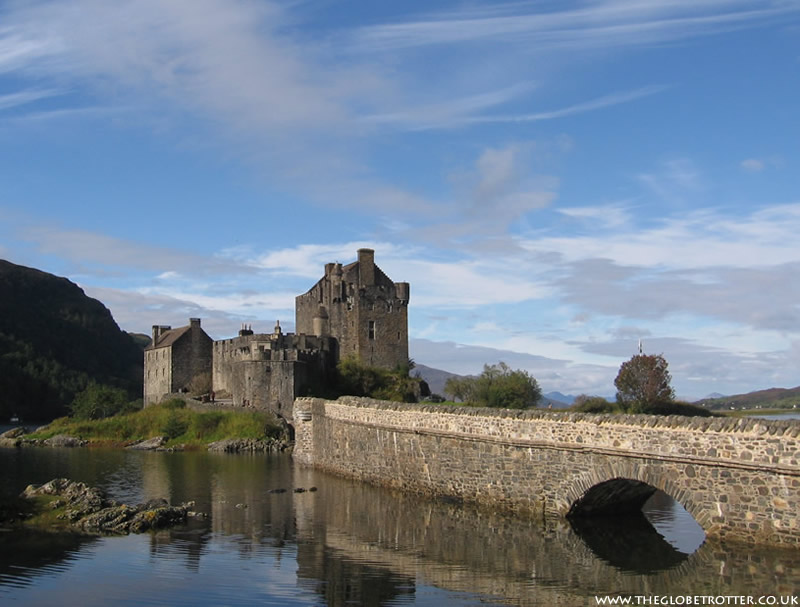
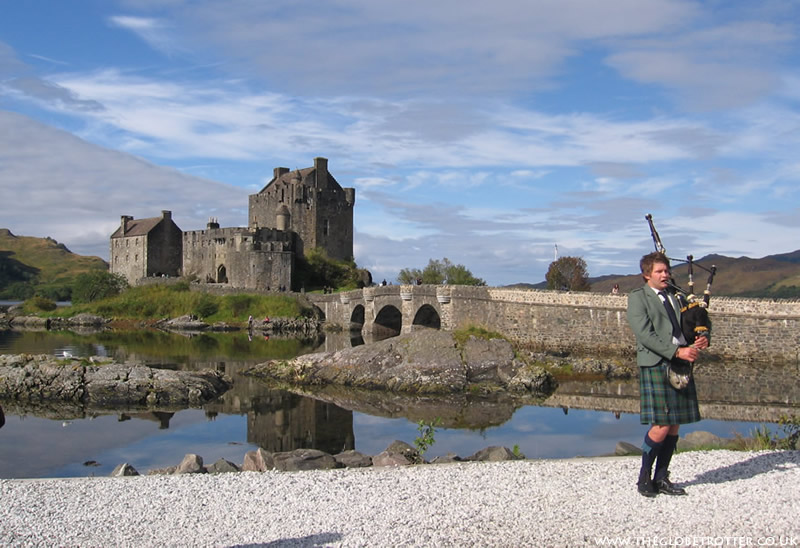
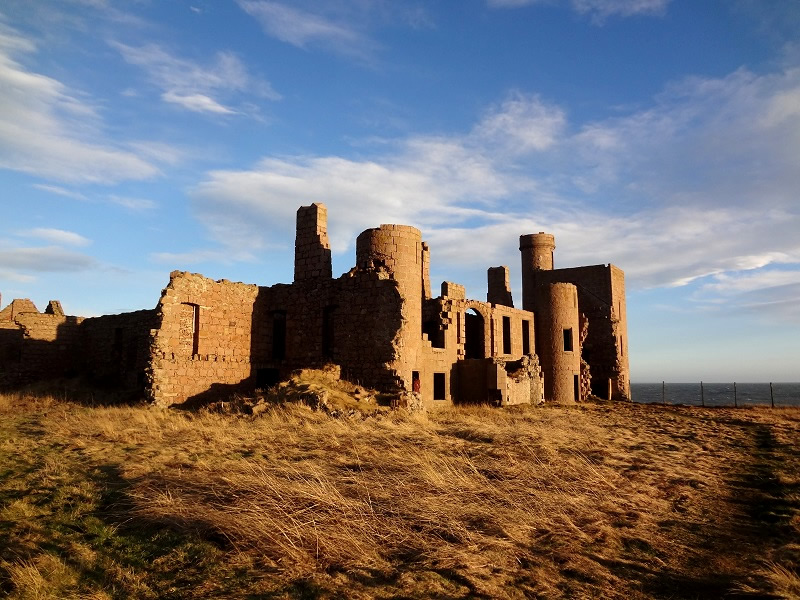

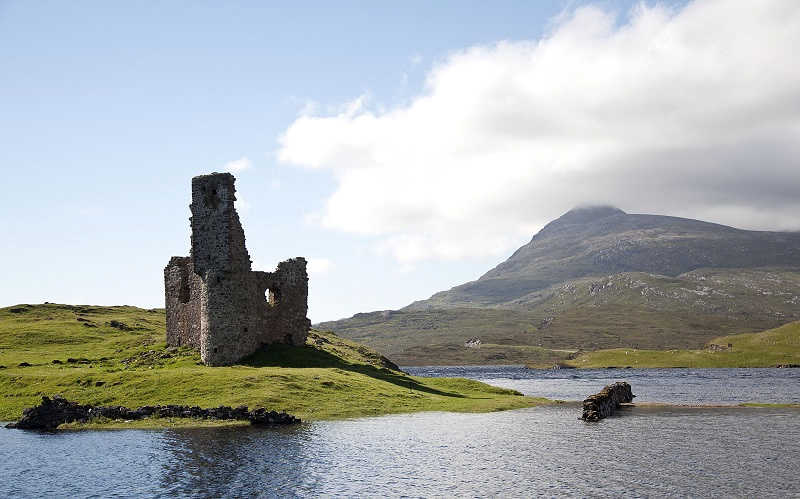
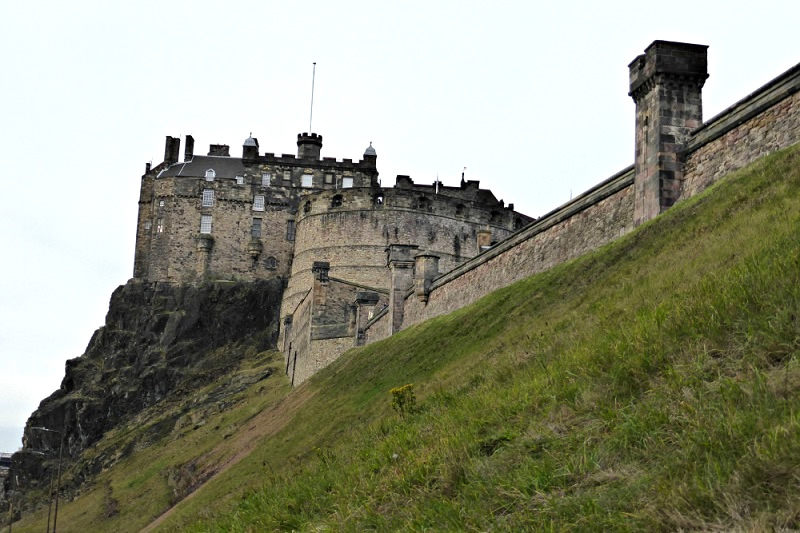




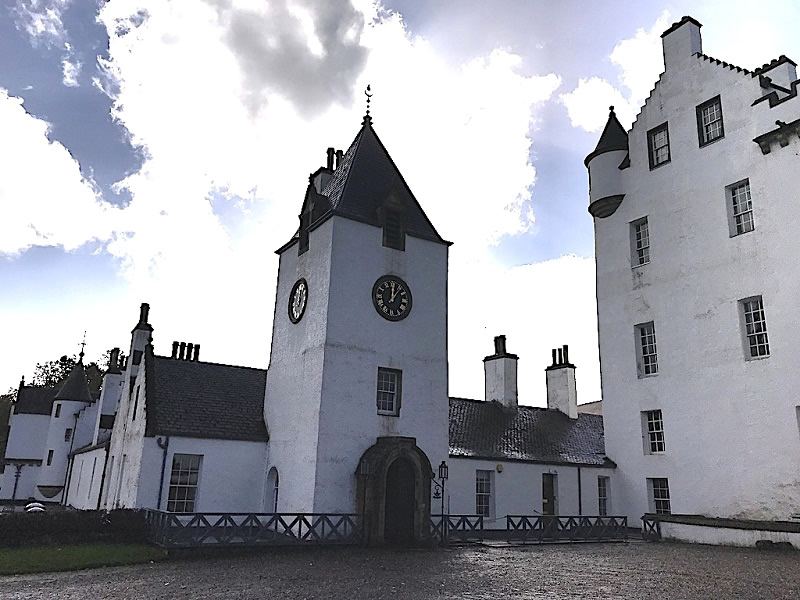
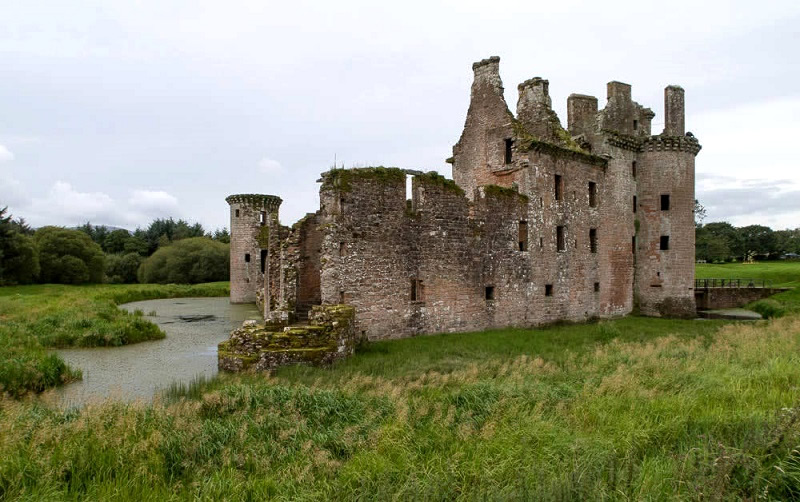
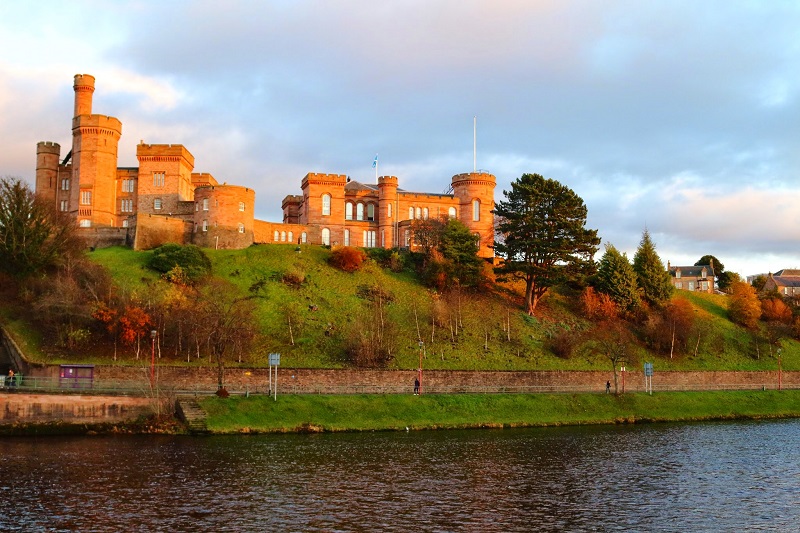
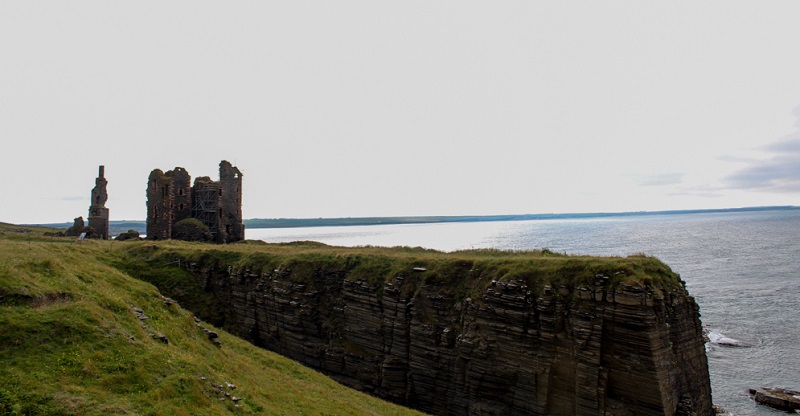
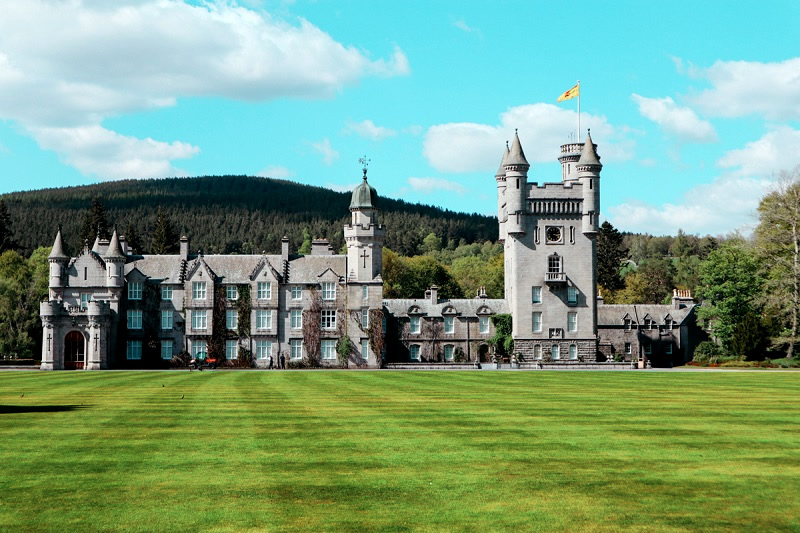

I've not been before, but I would love to go to Slains Castle. I like the story of Bram Stoker's Count Dracula, and how often he visited Cruden Bay when he came to Scotland!
ReplyDeleteFor me Fyvie Castle is very special - it’s where we got married.
ReplyDeletehas to be Edinburgh Castle - im obsessed with it, we go afew times a year.
ReplyDeleteI am lucky to live just a few miles from Edinburgh Castle and have family all over the highlands to get to see all these places, breathtaking every single time!
ReplyDeleteArdvreck Castle is just so picturesque
ReplyDeleteInverness Castle looks so inviting!
ReplyDeleteLove Edinburgh Castle, there's so much history there it's seeping from the walls xx
ReplyDeleteLove visiting Edinburgh Castle. Been with the family and have so many happy memories
ReplyDeleteEdinburgh castle xx
ReplyDeleteLove Edinburgh castle - just wished it was nearer to us
ReplyDeleteInverness Caste is majestically built and situated. Really fabulous!
ReplyDeleteEdinburgh castle, there's just so much history there
ReplyDeleteBlair Castle - we love a good weaponry collection & have never visited before
ReplyDeleteEdinburgh Castle as it's the only one I've been to.
ReplyDelete